A visit to JMU…
18 minute read
April 12, 2016, 10:36 AM
Recall that on March 30 and 31, my friend Elyse and I went on a road trip to Stuarts Draft and such. On the 30th, we visited Afton Mountain, my ex-store in Waynesboro, and Staunton Mall, among other things. On the 31st, we visited JMU, as the plan was to show off a bunch of vintage elevators and fire alarm systems on campus. Plus JMU was planning to build a new dining hall to replace the current one, so a final visit to D-Hall was a must.
The first order of business on our trip to JMU was a visit to Zane Showker Hall. I took many classes in that building over the course of my college career. We came to Showker to update a very well-known photo in higher resolution with my Nikon SLR. Specifically, this one:
I took this photo with Big Mavica on March 22, 2003. Big Mavica, as you may recall, was a 4.0 megapixel camera, which was hot stuff for its time, but would be considered very low resolution by today’s standards (for what it’s worth, my last four cell phones have all had higher resolution cameras than Big Mavica, and the Nikon is 24.2 megapixels). This photo replaced an earlier photo of the same alarm taken with the original Mavica on December 1, 2000:
And then here’s the new one:
I think that the new photo looks a lot crisper, and clearer. It’s definitely a good evolution of the other two photos. This new photo also continues the time-honored tradition of using the fire alarm in the vending machine area at Zane Showker Hall for Schumin Web. In other words, this alarm:
I have heard this alarm go off in 2000 and 2002, both times after someone called in a bomb threat – likely to get out of a test. Elyse calls this horn “the most famous 7002T” because the 2003 photo has gotten around so much. Each time I’ve gotten up on a chair to photograph this alarm, the thing that’s going through my mind is, please do not let this thing go off in my face. As much as I enjoy a Wheelock 7002T, I don’t want to hear it at that this close of range:
And especially not when I’m standing on a chair that I probably shouldn’t be standing on in the first place. It’s funny how it worked out, though. I was up and down photographing that thing from all angles, and also realized that my normal angle put me right in front of a stairwell door. So I got Elyse to serve as a lookout, to warn me when there were people who needed to get through.
Then my mother demonstrated once again how uncomfortable she is around people doing extremely nerdy things, i.e. what she was doing while Elyse and I did our thing. In Mom’s case, she was making small talk with everyone, saying such things as, “Oh, I’m their therapist,” referring to us. I get that Mom’s not into the same things as Elyse and I are, but the commentary was a little over the top – and a bit insulting. Just let us have our nerdy little fun for a few minutes without telling everyone that you think that we, or our interests, are abnormal, okay?
Otherwise, I also took a look through Zane Showker Hall while I was there, to see if anything had changed. The biggest change was a study lounge’s being converted into an office suite, plus the classrooms were recarpeted, and the attached swivel seats in those rooms had been replaced with wheeled task chairs. Back in my day, only room 102 had separated seats. All of the rest had swivel seats. Additionally, as Elyse was quick to notice, the elevators in the office part of the building had been modernized. The elevator in the classroom part of the building had not been changed. The stairwell, meanwhile, was still vintage:
Yes, that is a pink stairwell. How “early nineties” can you get? Unchanged from my days at JMU.
But on the ground floor, right next to a stairwell, I found something that most definitely did not belong:
That is a Wheelock 7002, which is an older model than the 7002T. I do not remember this from my college days, and so I assume that someone replaced the 7002T that was there before with this older horn at some point after I graduated. With this horn/strobe in place, Zane Showker Hall still sounds the same, but it makes me wonder where this notification appliance came from, since Wheelock’s 7000 series hasn’t been manufactured in decades. My best guess is that it came from a dorm in either the Lake area or the Village, since many of those dorms had 7002 horn/strobes back when I was in college, but most of them have gotten new fire alarm systems since then. I guess when the 7002T pooped out at Showker, they just swapped one in that looked similar that they had lying around. It certainly looks nice like that (I’ve only seen 7002s with trim plates in one other place – White Marsh Mall outside Baltimore), and I’ll bet that they fooled quite a few folks with that.
And lastly, in regards to Zane Showker Hall, I’ve never understood why they chose to put this message on the classroom signage:
“REMEMBER THE HONOR CODE” is on the sign at the door of every classroom in Zane Showker Hall. This was the case even when I was a student there. Showker is the only building where this message exists. Is it that they think that future businesspeople are inherently dishonorable, and therefore have to be reminded every day about the honor code? Or is this an artifact from some big cheating scandal that has long since been lost to history? In any case, I always found this a bit curious.
After Showker, we headed through Warren Hall to get to D-Hall. Warren Hall certainly looked different. The second floor had at last been renovated, which meant that the “Transitions” area, which was the space that the bookstore had vacated in 2002 and was still in an in-limbo area at least through 2010, finally got a real use again. That space was now occupied by the post office, and that meant that box 2732, my mailbox for four years, was gone. I also presume that the “post office lounge” name, if still used, is a misnomer, because the post office is down the hall and around the corner from the now-orphaned lounge.
The third and fourth floors were also renovated, though to a lesser extent, as these floors were previously renovated in 1999. As part of this most recent renovation, Card Services, which was previously on the third floor, was replaced by this:
Back in my day, it looked like this:
Yes, they just walled it in. Card Services is now in the old Rockingham Memorial Hospital building, which JMU acquired when the hospital moved to its present location. It’s kind of a shame that Card Services is gone from Warren Hall, though, since those people were wonderful, and they gave the entrance to Warren Hall a good bit of warmth. Now it’s more of a soulless corridor on the way to other places.
We did, however, find this in that corridor:
“In one word, how would you describe your life?” I wrote “EXPENSIVE!” and Elyse wrote “bananas”. Mom didn’t write anything. In any case, life is expensive, so I thought it was fitting. Other responses included “#ratchet”, “adventurous”, “lovely”, “tired”, “wild”, and “unpredictable”, along with some more whimsical ones such as “humus” and “mangoes”.
And then there was D-Hall:
And it was more or less just as you remember it, too. The only major differences were the lack of trays (which they did away with prior to my 2010 visit), a few walls had a different treatment than before, and a few stations had been moved around. And when we arrived, Betty was still working as the cashier, as she did back when I was a student. A lot of the staff still remembered me, too, and that was awesome.
The price, however, was not as I remembered it: a visit to D-Hall now cost $12.50. It’s still a really good deal for what you get, but definitely pricier than D-Hall was in my day, even when adjusted for inflation.
And then here it is, captured in its final month or so of operation:

The bridge over door 4/5, constructed during the 2001 renovation that created this version of D-Hall. I have a photo of some friends sitting in this area from 2001, when this facility was new. The floor was changed from wood to tile at some point, but otherwise, looks the same.

Inner seating area of dining room 3.

Cafe Roma. Hasn’t changed a bit.
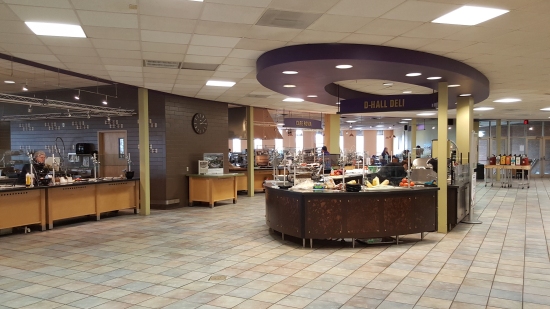
D-Hall Deli, in the center. This used to be over to the side, where The Produce Market is now. Apparently, the Produce Market and D-Hall Deli switched spots at some point. The Produce Market also absorbed “Accents“, which was there in 2001, and gone by 2016.

The “Madison Sizzles” and “Southern Bistro” stations.

The cashier’s station at entrance 4/5.

Beverage station, called “Splash”. I still remember being bewildered over how to get the milk to come out of this machine the first time I used it.

And last but not least, the famous D-Hall waffles, still available at all meals. Now, though, your waffles have “JMU” written on the top (they were unadorned in my day).

This sign was perhaps the only thing retained in the 2001 renovation, advising students that food was not allowed outside the dining room. Good to see that it still lives on (though not for much longer with the upcoming demolition).

Fire alarm horn in the vestibule. D-Hall had a Spectronics system, and the default horn was Wheelock 7002T, with BG-10 pull stations.
Leaving D-Hall, we took Mom back to her car so that she could go on with her day, and then Elyse and I went back to campus. We first swung by McGraw-Long Hall, which was my freshman year dorm. We didn’t go in, but we got a photo:
Looks the same on the outside, though the wood on the building had been painted once again. As we walked past the entrance, though, I noticed that the Cerberus Pyrotronics fire alarm system that I remembered had been replaced by a new Simplex system. That was disappointing to see, because I always thought that McGraw-Long’s setup was rather unique in both appearance and sound. And now this had been replaced by more TrueAlerts. Boooooooooooooooring.
After this, we headed over to the Quad area, parking behind Burruss Hall. The goal was to film a number of vintage elevators on campus. The plan was to start at one end of the Quad, and work our way back to the car. We were going to see elevators in Roop, Moody, Maury, Keezell, Carrier Library, Burruss, and Miller. This didn’t go so well, because the elevators in all but the library and Wilson had been either modernized or replaced since my day there. In the case of Roop, Moody, Maury, and Keezell, it was an outright replacement of the entire elevator. Miller was a modernization. Burruss, the interesting thing that I wanted to show Elyse was replaced for something more normal.
But I have photos of some of what once was. Here’s the up/down indicator at Roop:
And here’s the toggle switch for the lights at Burruss:
And yes, I did like to ride that elevator in the dark, thank you very much.
Then after a series of disappointments, Elyse did get to enjoy the vintage elevator in the stacks at Carrier Library:
Then as far as fire alarms went, Roop, Moody, and Carrier Library had all been upgraded to Simplex systems. It was disappointing to see Roop changed, though, since their alarms were unique:
Clearly, the strobe was a retrofit. As I understand it, this Wheelock strobe replaced an earlier, non-ADA strobe. And now, more TrueAlerts have replaced these.
In Keezell Hall, after the disappointment over the elevator, I have to wonder who was charged with choosing the colors for that building’s last paint job:
Whoever thought to do all of the doors and trim in green should have thought again, as that is beyond ugly. Back in my day, the doors and trim were a light brown, which matched the overarching color scheme a lot better than this. This reminds me of a hospital. And modern hospitals know better than to do something this ugly.
The fire alarm system at Keezell was also changed. While this had always been a Simplex building, rather than 1980s-era notification appliances, it had TrueAlert speaker/strobes. And the new panel was big:

It looks like an upended coffin, doesn’t it?
In addition, the panel was relocaated. The panel for Keezell used to be in a utility room, behind a locked door, whereas this one is out in the open.
Then Burruss Hall also got a new fire alarm panel, but not a full system, as the original 1990s-era notification appliances and pull stations were retained. I think that this is most likely those horns’ third panel since they were installed in the early 1990s, since the panel was Spectronics back when I was in college. Now, it’s a coffin just like Keezell. Compare:
I’ve always wondered what happened to the original Simplex panel at Burruss. The building was renovated to its current form around 1991, and the pulls and notification appliances clearly date to that time, and the Spectronics panel also had plating behind it as if to indicate that a larger panel once occupied that space. I can only assume that it was bad enough to warrant ripping it out entirely after a relatively short period. But now it’s come full circle, as Burruss is again 100% Simplex after many years of being Simplex-in-name-only with that non-Simplex panel and all.
Then JMU is still in the process of renovating the old Rockingham Memorial Hospital to make it more Madison-like. They’re putting a lot of bluestone facing on the exterior of the building, among other things. I’m guessing that the goal is to make it unrecognizable from its days as a hospital. The skywalk over Mason Street, between the two sides of RMH, looked like this when the hospital was there:
Now, it looks like this:
And the moment that I laid eyes on it, I realized that they had copied a feature from Virginia Tech. Here’s the Virginia Tech version:
This skywalk connects Torgerson Hall with Newman Library at Virginia Tech. The JMU one clearly copied several features from Tech’s version, right down to the name of the institution carved in the stone of the arch.
Now, I agree that the JMU skywalk needed updating. RMH’s version of the skywalk looked very dated by 2010 or so. But the updated version resembles Virginia Tech too much for my liking. I would have preferred something that evoked the architecture of Wilson Hall a bit more, working some of the red Spanish tile roof material in (the top of the skywalk really needs something more), but they unfortunately did not consult me for this project.
Then we headed back across Interstate 81 and visited an old favorite of mine as JMU buildings go:
Potomac Hall! I lived in this building for three years, so I knew it well, and remember it fondly. It was good to visit it again, after having been away for 13 years. And unlike a lot of the buildings that we saw on campus, Potomac Hall looked, more or less, exactly like I remembered. It’s also an all-freshman dorm now, which makes me sad. After all, I was a Potomac Hall resident (and later, resident advisor) as a sophomore, junior, and senior. So if it were an all-freshman dorm then, I wouldn’t have had my Potomac Hall experience.
And unlike McGraw-Long, where we didn’t try to get in (dorms at JMU are card access), we succeeded in getting in with very little effort. Some students saw us and just opened the door for us. Well, cool. So I gave Elyse a tour of my old dorm.

The main vestibule area, between the two wings. The Pavilion Room is off to the left.

First floor lounge, upperclass side. The laundry room is that door on the right side wall.

Remember how I wrote a quote article about these back in 2000? They have been replaced! In their place are the standard JMU emergency phones, where one press of the button calls campus police. This seems a better solution than the old intercom system for rescue assistance. Those old buttons would get hit so often that no one paid any attention to them. If someone hit one, it sounded an alarm at the main entrance, someone would press a button to stop the alarm, and that was that. Then campus police would just reset the system with a key when they were nearby, but even they knew that the system was worthless. The likelihood that someone would actually respond to a legitimate activation of the system via the old intercom was slim to none. The new implementation, where it contacts campus police directly, makes more sense.

TV lounge, fourth floor, upperclass side. The College Center (now Festival Student Center) is in the background.

Having shown Elyse both my sophomore year floor and my senior year floor, we headed across to the freshman side. But first, we stopped to photograph this little guy. This is the pull station that I activated for fire drills at Potomac Hall. Here’s the video of the first time I pulled it, and the last time I pulled it. I think I surprised Elyse when I reached towards it, saying, “Oh, one more for old times’ sake.”

And now, off to the freshman side. This is the corridor from the main entrance to the freshman side.

The freshman side elevator. It’s funny what comes back when you visit old places. We rode this elevator up to the fourth floor, and I started to hold on. Starting in 2001 or so, the freshman-side elevator started to drop pretty dramatically when it got to floors. From what I could tell, it would stop too high up, and then suddenly correct itself, dropping to the correct level for the floor. And the amount of correction correlated with the height of the floor and the weight of the load. Thus one person to the second floor might not notice anything. But ten people on the fifth floor would get a very dramatic drop, to the point that you might momentarily think you were about to fall down the shaft. This sudden leveling also happened on the upperclass side, but to a lesser degree than on the freshman side.
Thankfully, JMU had corrected this leveling problem by the time of our visit (thank heavens). However, it did take me years to lose the whole idea of bracing myself for a big drop whenever I was going up in elevators – especially crowded ones. I remember when I went up the Sears Tower observatory elevator in 2007 with a fully loaded elevator, and was anticipating the drop when we arrived at our floor. After all, 100-some stories with a full elevator would have been a real shaker. I was delighted that the elevator’s leveling accuracy was spot-on.

Welcome to the fourth floor on the freshman side. This was my junior year floor, where I was the RA in 2001-2002. It looked just like it did back then, with three differences. First, there was new carpet. The old carpet was mostly purple. Second, the lights above the room doors were disabled, which made for a darker environment overall. And third, the room numbers were also stickered to the frames above the doors, along with the signs next to the doors. I predicted the numbers over the door frames back when I was in college. After all, the older dorms had the numbers stenciled on the frames in paint, and so I figured that such a treatment for Potomac Hall would be inevitable. However, the fact that they kept the original signs when they did the frame treatment surprised me.
Elyse and I got to meet a few folks who lived on my old floor. Nice people. It was good to share those memories with current residents. We ended up walking out with one of these residents, a girl who lived in 462 (my old room was 461, across the hall). I was very surprised that the back half of the floor smelled like marijuana. According to the girl we were walking with, it always smells like that. I kept thinking that a pot smell like that would have never happened with the hall staffs that I worked with at Potomac Hall.
On that subject, it’s kind of amazing that I got through my time in Potomac Hall as well as I did. Recognize that my old hall director, Mecca Marsh, was, in many respects, a pretty terrible hall director. This was mostly because she lacked confidence in herself, even though she tried to put on a show for everyone to make it look like she always knew what she was doing. She always wanted instant results, and was too quick to discard ideas, often before things had a chance to fully work. My favorite case of this was where she once told me that she had tried five different supervisory styles on me without success. I was a bit blindsided by that, and at the time, I thought something must have been wrong with me, with so many styles’ not working. But years later, I realized that the reason none of them worked was because she didn’t wait for me to adjust to a certain style before deciding that something didn’t work, and never communicated these changes with me. I usually work quite well with my bosses, and part of the forming of that good working relationship is figuring out how the boss works, and knowing how to make the best use of them as a supervisor. When the boss is inconsistent, as Mecca was, I don’t know what I’m going to get. That makes me hesitant to go to them, specifically because I never know what I’m going to get. I had too many instances where I was expecting one version of Mecca, but the Mecca-du-jour was something else, and the whole thing would then become very uncomfortable, as those of us on staff were suddenly made to look foolish in front of our residents, whether intentionally or not. And then on the subject of instant results, immediately after dealing with some incident, came the dreaded “let’s process” moment, where she wanted to derive all of the lessons to be learned from an incident right on the spot. My usual thought process at that point was, honey, I am tired right now, and I need to go to sleep, and you are now the only thing between me and my beauty rest, so please go away. Plus when you’re too close to the moment, as well as tired, the lessons haven’t had time to bubble up yet. There’s a reason that we say, “I’ll sleep on that,” and similar. Thinking and processing takes time, and a lesson learned from a situation may come out the next day, a week later, or in some cases, years down the road. Additionally, it may take another, unrelated experience to derive a lesson from a past experience. And lastly, for someone who was studying counseling psychology, she wasn’t very good in the way of validating concerns. I would bring up a concern, and she would dismiss it by saying, “No, that’s your perception of it,” and then tell me what the Mecca-approved version was, without ever actually addressing the concern. It wasn’t until later that I realized that “reality” is subjective, and that an individual’s perception of a situation is their reality, and that dismissing someone’s take on a situation out of hand like she tended to do is the absolute wrong thing to do.
All that said, though, despite her many, many, many flaws, Mecca would have made sure that the book was thrown at someone for using marijuana in the dorm, because marijuana is still technically illegal in Virginia. We always used to tell our underage residents that if they wanted to drink or use any sorts of illegal drugs and the like, fine, but just don’t do it in the building. If they did it in the building, and we found out about it, we were obligated to write them up for it, and that was just too much paperwork to deal with.
Of course, speaking of marijuana, it’s funny that I so quickly recognized the smell of weed in a college dorm in the first place. Back when I was in college, I didn’t know what pot smelled like. I clearly lived a more sheltered life than most, because I never learned what it smelled like. I only really became familiar with what marijuana smelled like in the late 2000s, when I ran more with the activist crowd. Some of them were marijuana users, and there were times that I had seen it used openly. Then in my current role in public transportation, it’s not uncommon to see a guy standing at the bus stop, the bus rolls up to the stop, the guy throws his joint down, blows out the smoke, and then boards. He smells strongly of pot, since he had just been using it a few seconds prior, and proceeds to make the entire bus smell like pot as he walks all the way to the back. And I’m sorry, but that stuff stinks. In that case, I don’t care if it’s ten degrees out. I’m opening a window.
From there, we left campus. After that, we stopped by Harrisonburg Transit to say hello to a friend who works there, and who took us on a tour of the facility. It was interesting to see the different ways that a smaller transit agency operates, as I am most familiar with the way that a large agency operates. The Harrisonburg Department of Public Transportation also operates school buses, which is on the opposite side of the property. All in all, we had a good time, but I didn’t get any photos.
And that was that. From there, we headed back up to Maryland. This was definitely a fun little road trip. And I suppose that if this two-day trip taught us anything, it’s that you can’t go home again, as the only constant in life is change.
Categories: Elyse, Family, Fire alarms, JMU











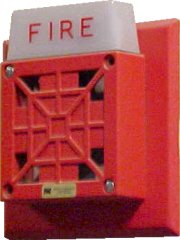









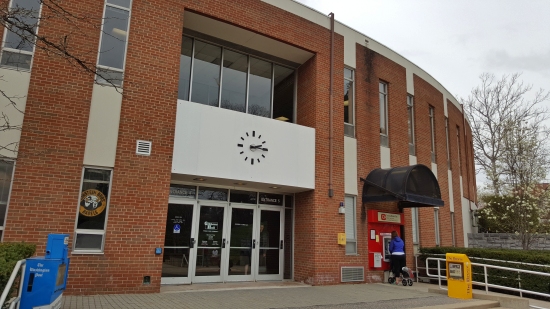


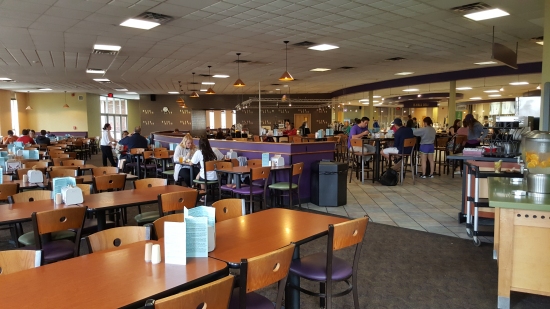











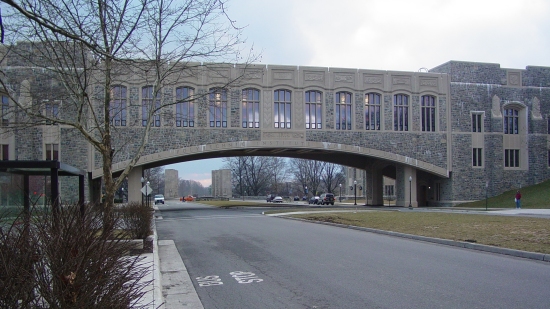

Leave a Reply